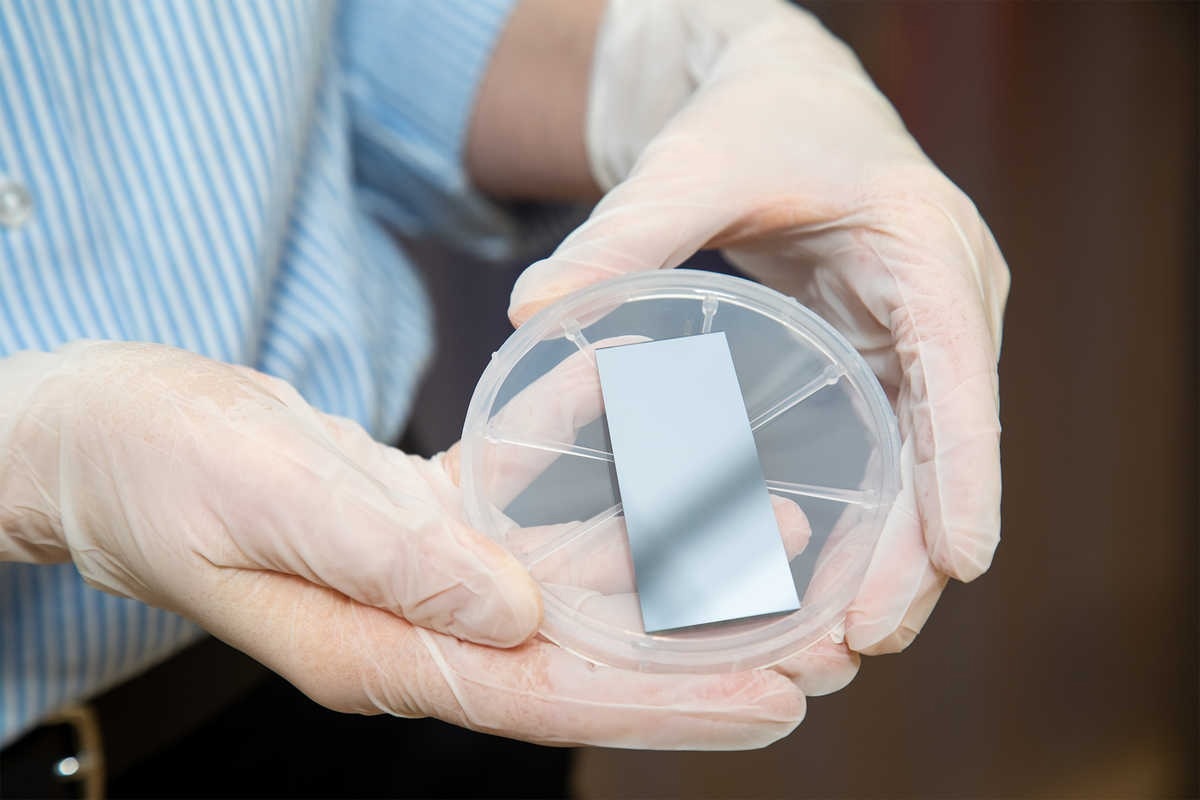Southwest Research Institute is investing internal funds to create more effective conversion surfaces that will enable future spacecraft equipment to collect and analyze low-energy particles. Conversion surfaces are ultra-smooth, ultra-thin surfaces that cover a silicon wafer and convert neutral atoms into ions, allowing for more efficient particle detection from space.
 SwRI space scientists are collaborating with materials specialists to create more effective particle detection surfaces for spacecraft instruments. Pictured is a conversion surface substrate developed specifically for the IMAP-Lo instrument. Image Credit: SwRI
SwRI space scientists are collaborating with materials specialists to create more effective particle detection surfaces for spacecraft instruments. Pictured is a conversion surface substrate developed specifically for the IMAP-Lo instrument. Image Credit: SwRI
Changing the charge of particles simplifies and improves detection and analysis. Dr Jianliang Lin of the Institute’s Mechanical Engineering Division and Dr Justyna Sokół of SwRI’s Space Science Division lead the multidisciplinary project. The research builds on the successful development of conversion surfaces for the IMAP-Lo instrument on the Interstellar Mapping and Acceleration Probe (IMAP) spacecraft.
IMAP, scheduled to launch in 2025, will help researchers better comprehend the boundaries of the heliosphere, the area of space that surrounds the solar system and is heavily influenced by the solar wind.
When low-energy atoms enter the instrument from outer space, they bounce off the conversion surface and either gain or lose an electron, making their electrical charge unbalanced. This makes it easier to increase their speed and analyze their mass and other properties.
Dr Justyna Sokół, Space Science Division, Southwest Research Institute
These surfaces must retain their conversion efficiency throughout the life of potentially decades-long missions.
The thickness of the conversion surface is typically less than 50 nanometers, more than 1,000 times thinner than a human hair. The surface also must be as smooth as possible — close to perfect. If the surface is not smooth enough, particles will be slowed by energy scattering, which makes it much more difficult to detect and analyze their properties.
Dr Jianliang Lin, Mechanical Engineering Division, Southwest Research Institute
Lin and Sokół are developing more efficient conversion surfaces using CdTe and ZnSe, building on previous research at the University of Bern.
Lin added, “Cadmium telluride and zinc selenide thin films are novel materials for conversion surfaces that could potentially reduce angular scattering on the surface to ultimately improve the conversion effectiveness.”
SwRI has produced a thin, smooth ZnSe film that satisfies requirements. The next stage will evaluate the material’s efficacy as a conversion surface.
“SwRI is uniquely capable of tackling this kind of challenge, with considerable expertise in spacecraft instrumentation and in developing thin films. That interdisciplinary collaboration made this happen, and that is why we feel confident we can make better, more effective conversion surfaces,” Lin further stated.